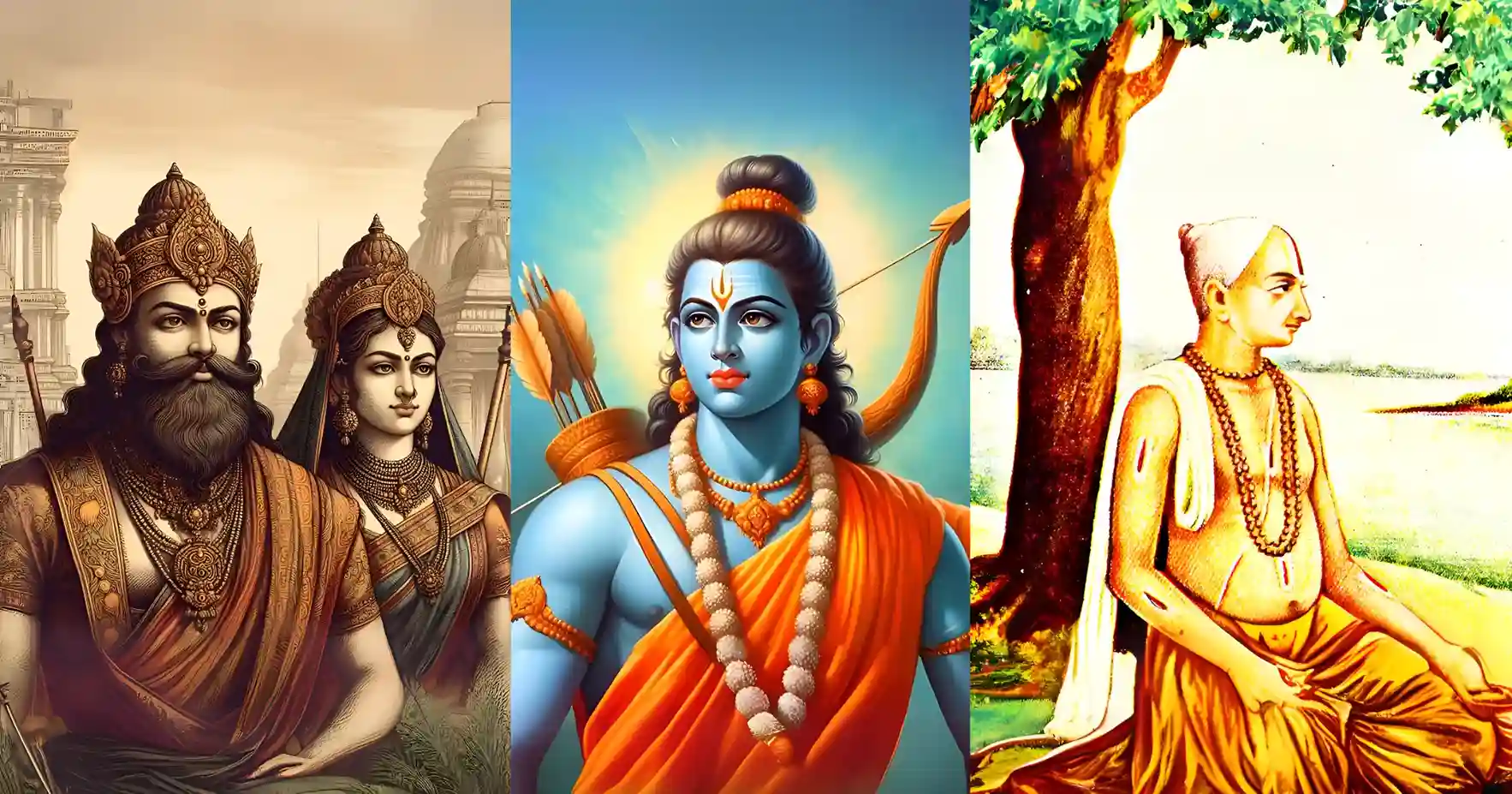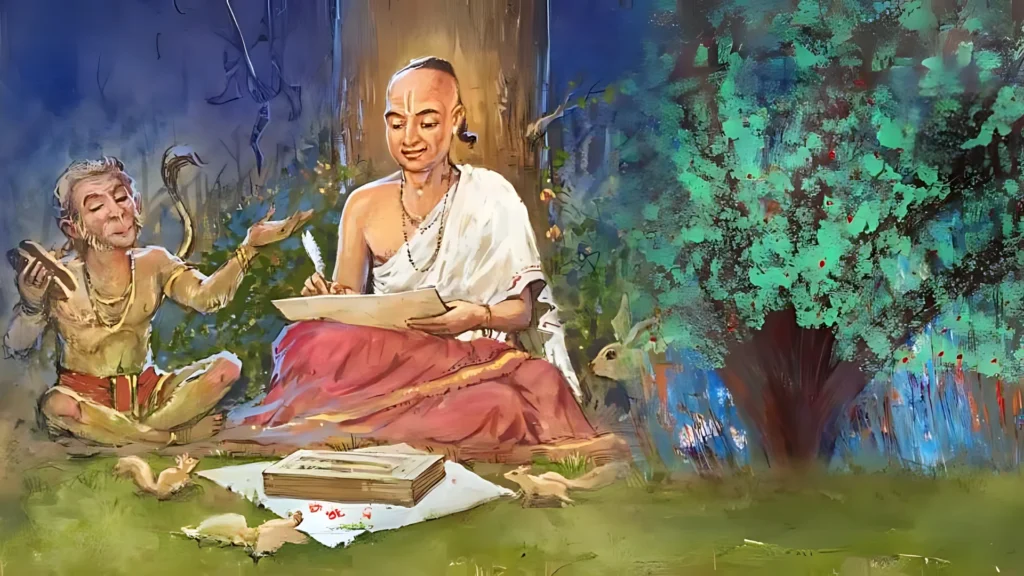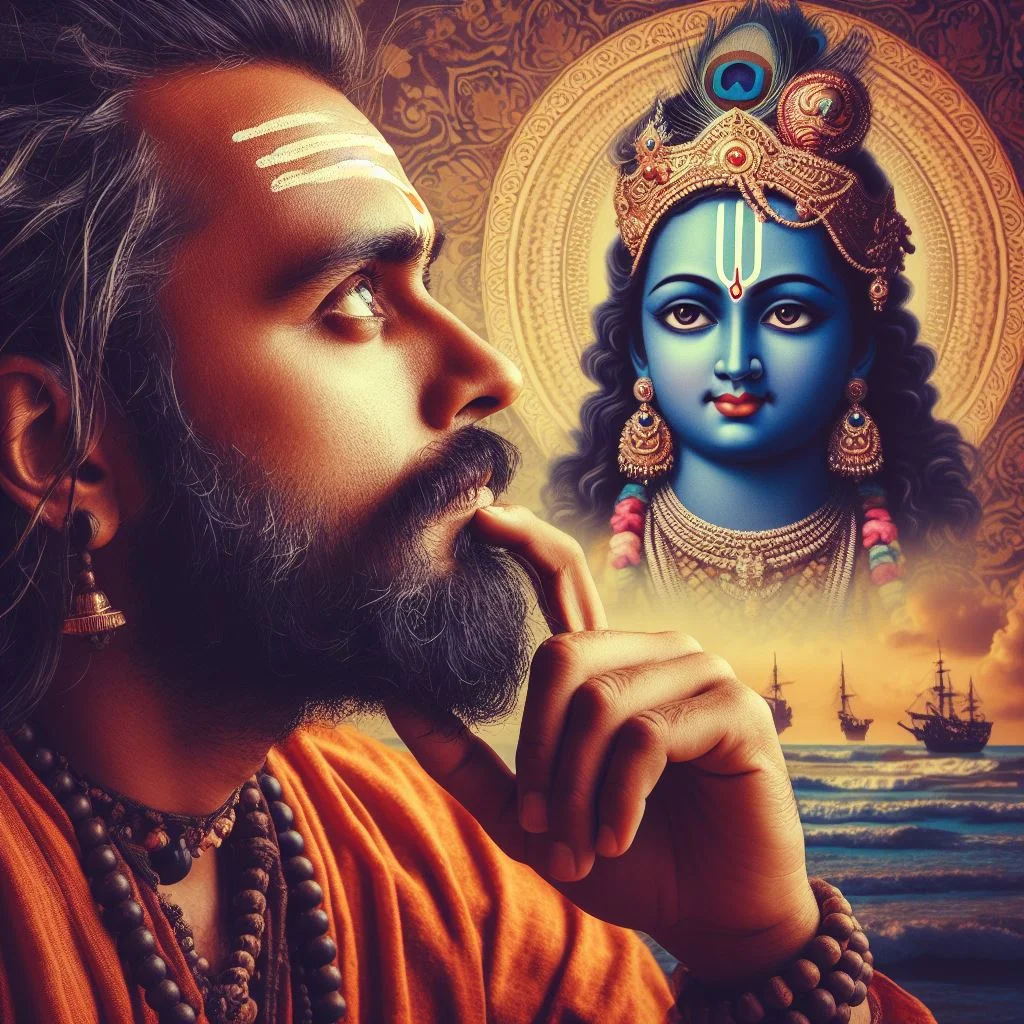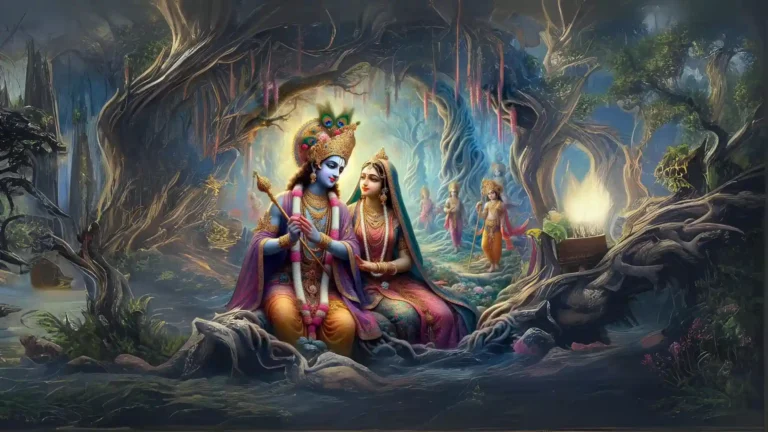Please Like the Blog and Share it for Maximum Reach
Table of Contents
A Note on Rajarishi Manu’s Acceptability
Every sage in Sanatana Dharma has his own speciality. Manu is one such sage, a Rajarishi. It may well also be true that the opinions that every sage holds may not comply entirely with other sages. His teachings though relevant in certain times and places, although they carry the highest import of Bhakti, also is not being well received today, in the land of its origin, Bharat.
Why are there Sages of Varying Temperaments and Moods?
This is because the people of the world are varied and depending upon the shades of personalities prevalent in human civilisation, there exist sages of different kinds, to cater to those classes of personalities. These variations in the life of sages are particularly useful in serving as guiding posts to these varied individuals. There is a close relationship between Sages, Holy Abodes, Holy Rivers and The Purest Emotion of Bhakti, the very fabric of what Bharat is supposed to represent, but has been unfortunately long forgotten, owing to the hammering blows of time.
Prayagraj: The King Among the Holiest Abodes
But among the many pligrimages too, there are some who are compared within the Shastras (शास्त्र) (Books of Dharma) as TirthaRaj (तीर्थराज, King of pilgrimages). Prayagraj (प्रयागराज), the emperor amongst holy pilgrimage spots. The definition of a pilgrimage spot, as defined in Sanatana Dharma, in the region of Bharath, is a place where there is presence of at least one river that finds its mention as a holy river in the Vedic texts.
The Confluence of the Three Divine Rivers and Bhakti
At Sri Prayagraj, there is a confluence of the three holiest rivers of the world namely the Ganga, Yamuna and Saraswati.
Shri Tulsidas Goswamiji Maharaj, in the Ramcharita Manasa says that it is Bhakti Devi alone which represents the banks of the river Ganga. The path of Karma is actually the banks of river Yamuna and the path of Jnana is represented by the banks of the river Saraswati.
Linking the Sages and The Rivers to the Holy Abode
It is the confluence of all these three paths that are represented by Sri Prayagraj. There are many such sages, whose life represents the path of Knowledge. There are other sages whose life represents the path of Bhakti. There are still other sages whose life is an epitome of the path of Karma.
Suitability of The Paths According to the Ramcharita Manas
So depending upon the suitability of an individual to take up one of these three paths, he prefers to follow a particular sage whose life represents one of these three paths. There are 4 river bathing banks that have been mentioned in the Manas which also represent TirthaRaj Prayagraj. This concept has been elaborated through the life of the great crow-bodied sage Sri Kakabhushundi (काकभुशुंडी).
Conversation Between Garuda Raj and Bhusundi
Sri Kakabhushundi narrated his life to the great eagle Sri Garuda Raj (गरुड़ राज). His life is a great boon to Sadhakas (साधक), spiritual practitioners, even in recent times. There is an event in one of the earlier lifetimes of Sri Bhusundi (भुशुंडी) where he was cursed by Lord Shiva to become a python, following the disrespect that Sri Bhushundi had shown, in that lifetime, towards his spiritual master, Guru.
The Guru was extremely saddened at the event and prayed to Lord Shiva to relieve Sri Bhusundi from the curse. Lord Shiva, praised the Guru and told him “Although your disciple is unworthy, I am pleased with your kind-heartedness towards the misfortune of your disciple. To satisfy you, I shall add some leeway into the curse.”
In the curse, initially Lord Shiva had said that Sri Bhusundi will first take birth as a python following which he shall then take 1000 births in the bodies of lower creatures. Yet influenced by the prayers of Sri Bhushundi’s Guru, he said “Bhushundi, you shall not undergo the pain and suffering that accompanies such births.
You shall ever remain free of such trouble. You shall also remember all your lifetimes in the course. This will be my blessing to you”, He further added. It should be noted that the life of Sri Bhusundi ji is not an autobiography of praise, this by no means.
7/8 Questions from Sanatana Dharma
The scores generated in this Quiz may or may not be absolute. There may be right or wrong answers to each Question. A percentage towards 100 indicates that you are more aligned to the overall subject matter.
Bhushundi in Ayodhya Puri
In one such birth, he was born in Sri Ayodhya Puri (अयोध्यापुरी). where there was a famine that wrecked Ayodhyaji and to save himself, Sri Bhushundiji, shifted his base to Sri Ujjain (उज्जैन), the land of Sri Mahakaal (महाकाल). He started comparing the regions of Sri Ayodhya and Sri Ujjain Puri. He thought thus, Sri Ayodhya is the birth place of Lord Sri Rama while Sri Ujjain was the land of Lord Shiva, Mahakaal.
Now his mind started playing tricks with him. He wondered whether Sri Rama was superior or was it Lord Shiva. People, devotees often end up in arguments trying to compare Dhams (धाम) (House of the Lord) like Sri Vrindavana (वृंदावन), Sri Ayodhya, Sri Badarikashrama (बद्रिकाश्रम) and other holy sites.
Now he started wondering, if Sri Ayodhya has been attacked by famine, is it not clear as to which land is more superior? It is then to be understood that the superiority or inferiority of a place depends one’s personal preference. Obviously preferences differ from person to person.
The Fervor of the Dham
Now somebody may experience that Shri Vrindavana Dham is parched out in summer, while it is pleasant for the whole year in a place like Sweden, so naturally Sweden is a better place. Such an argument shall be ridiculous.
It is to be understood that when we are talking about Sri Vrindavana the parameters to be considered, are the spiritual fervor of the place, the mood to perform sadhana or spiritual rigor, the austerities that are to be carried out and how much it supports our spiritual growth rather than trying to gauge the climate of the place.
On the other hand, Sweden may be a place for bodily comfort and sense indulgence. It may be for tasting intoxicants and other materials for bodily use. How can such a place be considered to be at par with Sri Vrindavana? The comparison grounds between these places have no commonality whatsoever.
Sri Manu’s Exalted Mood of a Devotee
In the Ramcharitmanas, Tulsidasji elaborates very much on the life of Emperor Manu.
He encourages common folks to seek Bhakti in this exalted mood, following the life of Manu Shatarupa. If one needs to understand Bhakti in the purest mode, one should see the example of Emperor Manu.
In understanding some mellows of Bhakti, Emperor Manu’s path of Devotion is par excellence. Emperor Manu ruled the entire earthly domain. Manu had all the comforts and riches of this world at his disposal.
He had every convenience at his beck and call. He had earned the respect of even the Gods who ruled other domains. What more could Emperor Manu yearn for? Even after attaining all the possibly attainable, Emperor Manu yearned for more. In terms of Ambition, no one can match Maharaj Manu.
We only know of the extremely limited, skewed and belittling worldly ambition. On the other hand, worldly pleasures and success meant nothing to Maharaj Manu. His ambition channeled to a domain, far beyond the material universe.
Manu’s Desire for Non-Matter
The desire of the far-reaching inner spirit, tormented him day and night. Spirit is non-material or “non-matter”. Hence nothing material can ever satisfy the spirit, even if it means having the entire world at one’s beck and call.
Not satisfied with the world, Emperor Manu along with his better-half Queen Shatarupa relinquished the comforts of their kingdom. They retired to the forests to attain the highest possible goal. They had realized that materialistic emotions can never satiate the thirst of the spirit. The spirit of man, a particle of the super-spirit, has no other means of quenching its thirst other than yearn for its very source, the super-spirit.
The Lord alone represents the ocean of bliss, the super-set of all happiness, joy, fervor, and the source of all embodied living entities. This, the royal couple realized. Now, the couple sought to attain that super-spirit, the Lord of Lords Sri Rama.
Manu Attracts Sri Rama
Only this could give them rest and repose. They meditated on the original form of Sri Rama, the Supreme Being. The Lord appeared before the couple and said “Ask for whatever you wish, I shall grant it.” Manu asked for something unimaginable.
Even the king of desires could not think of such a boon. Manu sought the Lord Himself! He desired that Lord Sri Rama must become his own. Emperor Manu staked a claim on the originator of all desires. No other higher desire remained, higher than the one on which Emperor Manu staked claim.
Manu Appears as King Dasharath
The benediction bore fruits; the same Manu appeared as King Dasharath, the father of Sri Rama in Treta Yuga. King Manu, now known as Maharaja Dasharath, became the most fortunate of all. Can there be a higher desire than this one?
One stakes claim over every small and big desire. Man spends his life in useless pursuits without realizing the goal of all goals, to seek the Lord. What an irony?
What does Goswami Tulsidas Want to Convey to the devotees?
Every small or big desire starts and has an end. However, the Lord is endless. Seeking Him is the wisest choice, enlightens Goswami Tulsidas. Bhakti is the Mantra for Kaliyuga. One can bring the story of Maharaja Manu into practical life in more than one ways.When we move our attention to the highest ideals of the Vedic scriptures, it’s a sign of great intelligence.
The 9 Limbs of Bhakti: Navadha Bhakti
Bhakti is the most effective and virtuous practice for Kaliyuga.If we have devotion in our hearts for our chosen ideal or Ishta Deva, it can build a lot of broken bridges in our life.One should follow one of the 9 limbs of Bhakti.
This includes chanting the Lord’s name, Hearing His glories, remembering His glories, pastimes and His form, etc. These forms of Bhakti will elevate our consciousness to such an extent that it will dissolve all the petty problems of life to which we give undue importance. Writing the Names of the Lord is an effective means of purifying the mind and hinging the fickle mind to the Lord so that the mind is rid of its base propensities.
Discontentment, Sorrow and Envy Plagues Man
The next teaching of Tulsidasji intends to make man aware of his/her suffering. The spirit of man remains soaked in sorrow because of his/her involvement in this never-ending mirage of life process. During this process, man undergoes ups and downs.
He goes through myriads of emotional upheavals that distance him from every possibility of relaxation. Endless desires keep gnawing man from the inside. Owing to these very desires man loses sleep and resorts to envy and jealousy, yearning for what the other man possesses. “The grass always looks greener on the other side”, best conveys the mood.
Envy knows only how to burn. It cannot differentiate between appropriate and inappropriate. It causes heartburn and offers no respite. Hence, many sages compare worldly afflictions to a roaring forest fire. Better then, to divert these negative triggers (that cause suffering), to something superior.
Wanting the Lord, becomes the highest good, in today’s testing times. The Supreme Being alone retains the capacity of turning envious desires into fruitful ones. In fact, this want, if nurtured deeply through practice, can automatically resolve all our problems. This includes the problems of survival, sustainability, and liveliness.
Seek the Lord with Intense Devotion
The desire of Goswami Tulsidas towards the Lord resembles that of a lusty and the avaricious man, both put together. Although these emotions are material in nature, the statement possesses deeper connotations. When applied to the Supreme Lord, it turns into Unyielding Bhakti, insatiable at all times.
This is the objective of Bhakti, says Goswami Tulsidas. A lusty man goes behind a woman like a maniac. An avaricious man tries to be miserly as well as becomes utterly desirous of having more and more money. This intense state of frenzy when applied to Bhakti makes it truly worth nurturing and delightfully fruitful.
Tulsidas Goswami Seeks Sri Rama
In this context, what could be a better state of such a man who is incessantly desirous of Lord Rama? A true devotee must always possess the mood of a lust man before attaining the Lord. After attaining the Lord he develops greed to have more of Him, never to be satiated.
Goswami Tulsidas wishes thus. Bhakti of the topmost kind. He sets this precedent for devotees who wish to follow the path of Bhakti. He maintains that only Bhakti grows with time and makes the devotee more and more discontented, even after having attained the Lord. Such an emotion is indeed transcendental and cannot be expressed in words.
Only such Bhakti is desirable and such a devotee is truly venerable. Bhakti as an expression of the spirit never understands contentment nor can limited, miniscule material happiness satisfy it.
Please Like the Blog and Share it for Maximum Reach
















